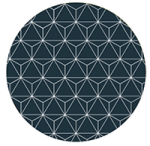The Open Call for the Social Art Award 2019 under the topic “We are the People – Peaceful Revolutions” was closed on December 15, 2019. We are very impressed by 558 submissions that were contributed by artists coming from 65 countries across all continents.
The winners of The Social Art Award 2019 are Narcissa Gold (USA), Melinda Mouzannar (Lebanon) and Bogna Grazyna Jaroslawski (Poland/Germany). The Honorary Mention goes to Kingson Kin Sing Chan (Hong Kong/UK).
Below you find the artworks, that passed the initial jury round. The public voting took place till 30 December and is a tool to give more public visibility to the topic and the artworks. It does not replace the final jury judgment. There were two wildcards for the most voted artworks that entered the final shortlist.
The focus diversity of applications shows that artists are active in the multi-faceted fields of socially engaged art reflecting on wars, genocides, femicides, traumata, violence against refugees, children, women, men, disabled people, LGBTIQs, animals. They share feelings for the planet and its living species, but also showing hopelessness due to complex crises be it climate change (e.g. in regard to water pollution), capitalism, corruption, a violation against human rights, nature, protected national parks. Many of the artists are constantly trying to give a voice to the poorest or empower unheard social groups.
It’s not only about peaceful revolutions, but it’s also about feeling a deep connection and showing love and respect for each other.
Thank you all for sharing your great and inspirational work and look at all the great contributions!
Revolution tree
murad sgaier
open category
The work symbolizes the breaking of the tyranny of repressive regimes in the Arab world, and the audacity of peoples to claim their rights after years of repression and silence. The mirrored tree represents worn-out regimes, which you think are alive (the green tree's color), it is rooted, but in the eye of people, it is dying. Gags: They symbolize the silence that governments imposed on citizens. They chose these extreme ways for years to either kill them silently or getting rid of them. The masks also symbolize the silence of the world’s opinion on the suffering of citizens in the country of dictatorships. The use of the Christmas tree has many dimensions. The tree symbolizes holiness, divine, popular consensus, authority, eternity, and power. These attributes governments have endeavored over the years to consolidate them in the mind of the Arab citizen, but after the Arab Spring and the continuation of the people’s revolutions, this god in the form of a tree is uprooted and so its decisions. How can art catalyze change?: As an Arab artist from the Middle East, I see that it is the responsibility of the arts in all its forms, to document the movements of peoples in the pursuit of the revolution on the one hand, and to take an open position that supports the demands of the people to deliver its message on the other hand. Art is a language in itself that people of different races understand. Therefore, through art, we can internationalize our cause and deliver it to the world view. This is what I am trying to do as a Palestinian artist. Proposed as symbol.
The work symbolizes the breaking of the tyranny of repressive regimes in the Arab world, and the audacity of peoples to claim their rights after years of repression and silence. The mirrored tree represents worn-out regimes, which you think are alive (the green tree's color), it is rooted, but in the eye of people, it is dying. Gags: They symbolize the silence that governments imposed on citizens. They chose these extreme ways for years to either kill them silently or getting rid of them. The masks also symbolize the silence of the world’s opinion on the suffering of citizens in the country of dictatorships. The use of the Christmas tree has many dimensions. The tree symbolizes holiness, divine, popular consensus, authority, eternity, and power. These attributes governments have endeavored over the years to consolidate them in the mind of the Arab citizen, but after the Arab Spring and the continuation of the people’s revolutions, this god in the form of a tree is uprooted and so its decisions. How can art catalyze change?: As an Arab artist from the Middle East, I see that it is the responsibility of the arts in all its forms, to document the movements of peoples in the pursuit of the revolution on the one hand, and to take an open position that supports the demands of the people to deliver its message on the other hand. Art is a language in itself that people of different races understand. Therefore, through art, we can internationalize our cause and deliver it to the world view. This is what I am trying to do as a Palestinian artist. Proposed as symbol.



